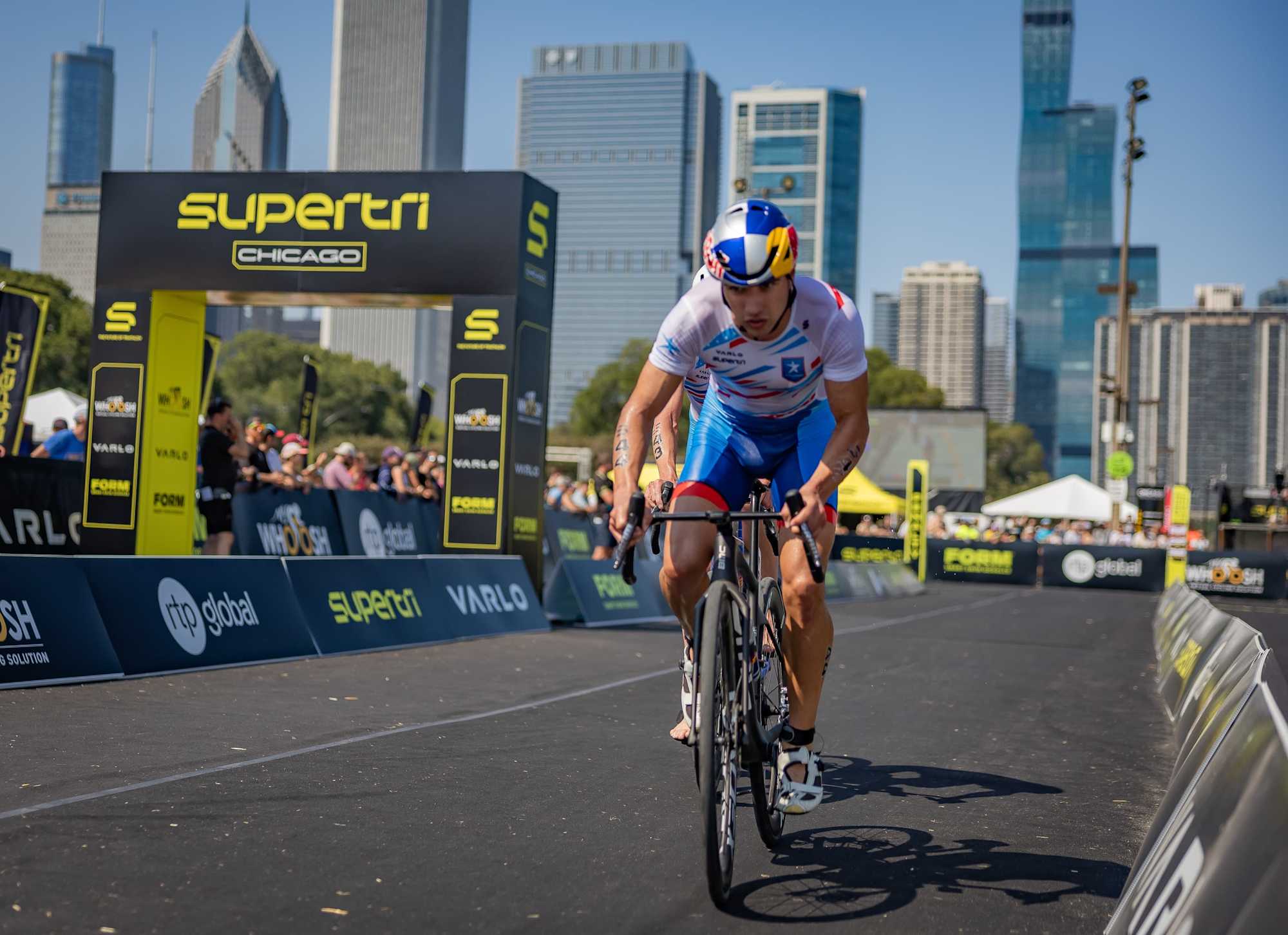supertri Chicago: A Blueprint for Our Future Ambitions

By Michael D'hulst, supertri CEO & Co-Founder
There’s something undeniably powerful about watching 8,000 athletes from all walks of life line up for a triathlon.
Even after decades in endurance sports, standing amidst the massive crowd in Chicago recently, I was reminded of why we do this—because of the moments that unite us.
supertri Chicago is the largest triathlon in the world. And when we talk about an event of this scale, it can be easy to lose sight of the human stories behind it.
This event isn’t just about elite athletes chasing titles or newcomers achieving personal bests. It's about the community—the way the athletes, families, locals, and visitors come together to create something greater than the sum of its parts.
It’s about the best in the world engaging and inspiring young athletes, about the thousands of participants who came from outside the city, bringing with them their families and their dreams, impacting the local economy.
It's about every major broadcaster and news outlet being engaged with the event.
It’s about the nearly 1,000 children who took part in the kid’s race, many of them experiencing the thrill of competition for the first time.
It's about a global broadcast of the biggest triathlon event in the world. These aren’t just numbers. They represent something far more significant—the powerful pull of community, the sense of inclusivity that sport can foster, and the broader impact events like ours can have.
But beyond the emotional and inspirational stories, there is a deeper message here, too—supertri Chicago is showing us what the future of triathlon could and should look like.
A Model That Defies Convention
Unlike traditional triathlon events and brands, which use mass participation to fund elite races, we’ve built an integrated model where both mass and elite races coexist symbiotically. Through format innovations, sustainable practices, and efficient event management, we’re getting closer to making elite racing financially self-sustaining.
The reason we’re able to get closer to financial sustainability, compared to the status quo in triathlon, is because our setup is more economical. At the same time, the format also enhances the athlete and spectator experience, delivering a product that is more attractive, and for the first time, appealing to an audience outside of the traditional triathlon participant base.
The shorter, fast-paced nature of the elite races keeps viewers engaged, increases media appeal, and attracts sponsorship opportunities. More importantly, it sits alongside our mass participation model in a way that enhances the entire event.
Rather than simply using mass participation as a funding mechanism for elite races, we’ve created a system where the two coexist symbiotically. This is not about financing the elite end of the sport but about redefining the fan experience with an innovative approach. By creating moments that resonate with new audiences, we inspire people to move from fandom to active participation. We keep participants coming back by connections with the fastest and most exciting racing.
This scalability is what sets us apart.
Inclusivity and Community Engagement: The Core of supertri
When you see first-time athletes crossing the finish line, the look of pride on their faces, the cheers from their families—it reminds you of the power of participation. It’s a reminder that sport is for everyone. And this is where we are making a real impact and where our pro racing is growing the symbiotic relationship.
At the heart of our success in Chicago are two things; our integration with the local community making it accessible and providing a support system for everybody, on the other hand the pro’s who deliver the media attention and widen the reach but also through interaction drive down the inspiration and motivation and that is something that is the core of our commitment to all of our events.
We often talk about inclusivity in sport, but what does that really mean? In Chicago, it meant opening up the event to a diverse range of participants—seasoned triathletes, complete novices, and everyone in between. Nearly 1,000 children took part in the kid�’s race, showcasing our commitment to fostering a love of sport in the next generation.
Additionally, our provision of a Divvy bike category was further evidence of our efforts to reduce the barriers to entry to the sport, as athletes without a suitable bike can pick up a city bike (Boris bike) to do the cycling component of the event.
Our commitment to community goes beyond race day. We’ve partnered with Lurie Children’s Hospital, supporting pediatric cancer research while deepening our connection with the city. Stories like Adrian Lam’s—who raced while recovering from cancer and raised over $12,000—highlight the life-changing potential of these events.
Take Adrian Lam, for instance. Highlighted previously by my colleague, Chris Williams, Adrian was diagnosed at 18 with Stage IV Non-Hodgkins B-Cell Lymphoma, he raced in the Chicago Triathlon and has so far raised over $12,000 for pediatric cancer research—grateful for the life-saving treatment he received at Lurie Children’s.
The impact we can deliver is then further elevated through robust corporate partnerships led by Chris and his team.
Through partnerships with companies like StoneX and United Airlines, we’re using Supertri as a platform for employee engagement and community outreach, bringing together businesses, athletes, and families for a shared purpose. These partnerships fuel the ambitions of all involved, from corporate teams to first-time triathletes.
The economic impact also speaks for itself. Almost half of the participants came from outside Chicago, bringing their families, filling hotels, and dining in local restaurants. The financial boost to the city was significant, but the social and community benefits were equally important. By embedding our events in the heart of the local community, we’re ensuring that these events are not just successful in isolation but are meaningful in their long-term impact.
The Future of Triathlon
supertri Chicago has shown us what’s possible when we break boundaries and create moments that matter. Our model is scalable, flexible, and deeply rooted in community. By lowering the barriers to participation and inspiring people from all walks of life, we’re building the future of triathlon—a future where sport fuels ambition, brings people together, and leaves a lasting impact on cities worldwide.
On August 25th, we witnessed a glimpse of that future. A future where we’re not just organising races but transforming lives. A future where the barriers to participation are lower, where the sport grows from the ground up, and where cities around the world can share in the economic, social, and community benefits of hosting these events.
As we look ahead, we’re excited about the possibility of building something bigger. Something that lasts. Something that leaves a legacy.







